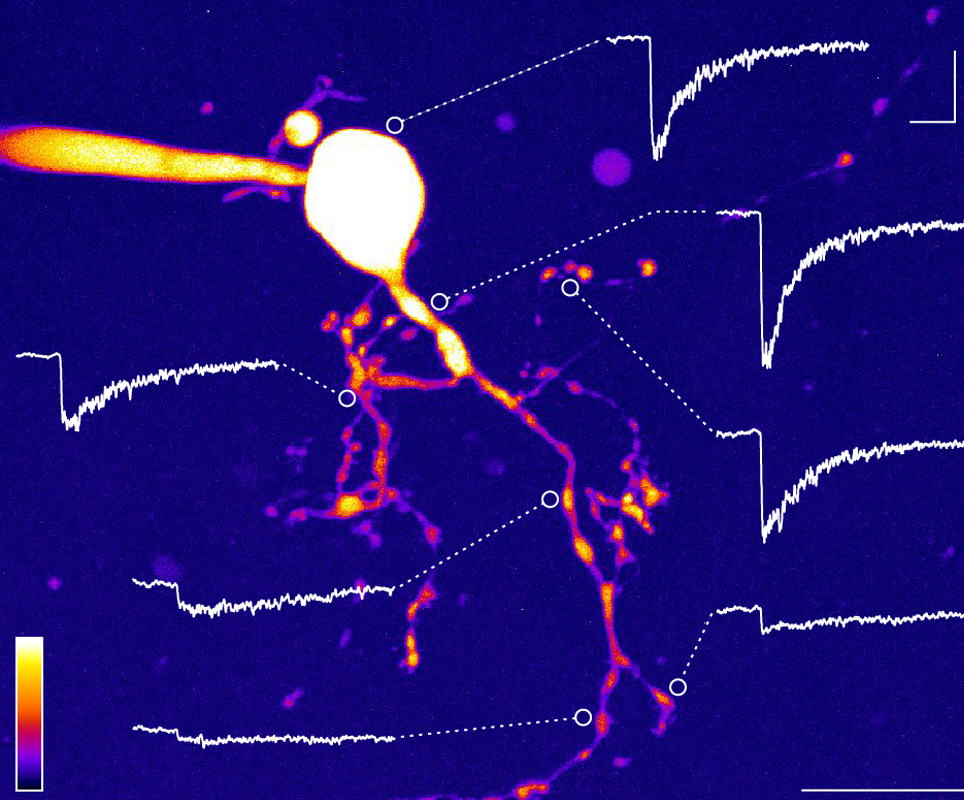
Lighting up: Development of photoactivatable nicotine
Scientists at the Howard Hughes Medical Institute (HHMI) Janelia Research Campus and Northwestern University Feinberg School of Medicine have developed a photoactivatable nicotine molecule. This compound can be uncaged using either one- or two-photon microscopy, making it ideal for studying nicotinic acetylcholine receptors (nAChRs) in brain tissue.
naChRs are involved in many cognitive processes, including motivated and affective behaviour, attention, learning and memory. Abnormal nAChR activity has been implicated in numerous neurological disorders, including nicotine addiction, schizophrenia, Alzheimer’s and Parkinson’s disease. Understanding the location and functioning of these receptors in the brain would provide novel insights into these disorders and could uncover potential treatments for them.
Ryan Drenan, Associate Professor in Pharmacology at Northwestern University explains that what drives him to research the nicotinic acetylcholine receptor is “an interrelated desire to understand why tobacco products are addictive and how normal cholinergic transmission works”.
Why did the researchers develop this molecule?
Caging molecules enables their release to be controlled both spatially and temporally using light. Nicotine can’t be caged in the standard way that many other receptor agonists can, such as those for glutamate and GABA receptors. It lacks a free carboxylic acid, amine or alcohol group where a photolabile group (or “cage”) can be easily attached, making the compound photoactivatable.
“Not all drug compounds have these functional groups, limiting the palette of caged compounds in biology” explains Dr Luke Lavis at HHMI Janelia Research Campus. “We used an unconventional and rarely used strategy of attaching caging groups directly on the tertiary nitrogen of nicotine; this was generalizable to other tertiary amine-containing drugs”.
The same technique that the researchers have used to make the photoactivatable nicotine molecule can also be used for other previously uncageable pharmacological agents, including escitalopram (a selective serotonin reuptake inhibitor) and fentanyl (an opioid analgesic).
How will this impact research into acetylcholine receptors?
The nAChRs open extremely quickly, but methods for applying agonists are slow, especially when studying the receptors in brain tissue. “Because of this, we had trouble discerning the fast actions of nicotine from the slow ones, and our interpretation of pharmacological experiments was heavily biased towards these slow actions” says Dr Ryan Drenan.
Dr Drenan explains “having a caged nicotine allows us to use light flashes to release nicotine and activate receptors extremely rapidly. This is even more advantageous when using a laser to deliver the light flash, as a laser allows us to uncage nicotine in a discrete spot next to a cellular membrane”.
The photoactivatable nicotine can be applied to the brain tissue and then rapidly uncaged using light. This means it can be applied to the nAChR with high temporal resolution, enabling its effects to be seen straight away. Physiological measurements of nAChR activation can be connected to information about the cell’s morphology, enabling locations of active nicotine receptors to be identified.

How could it be used in future research?
Dr Drenan and Dr Lavis would like to use this photoactivatable nicotine to better understand the locations of nicotinic acetylcholine receptors within neurons. This would lead to a better understanding of cholinergic transmission.
“It could also be useful in drug screening and advanced physiology experiments” says Dr Ryan Drenan. “Or possibly even in the brain of a behaving animal if it can be effectively delivered to the brain and photolyzed”.
A SliceScope Pro 6000 system was used for two-photon laser scanning microscopy and two-photon uncaging of nicotine.
Scientifica SliceScope Pro 6000
A full electrophysiology system with a static microscope that enables in vitro and in vivo studies, including advanced imaging such as two-photon and confocal. The system consists of a SliceScope, motorised movable base plate and two PatchStar micromanipulators.
Paper reference:
Banala, S., Arvin, M., Bannon, N., Xiao-Tao, J., Macklin, J., Wang, Y., Peng, C., Zhao, G., Marshall, J., Gee, K., Wokosin, D., Kim, V., McIntosh, M., Contractor, A., Lester, H., Kozorovitskiy, Y., Drenan, R. and Lavis, L. Photoactivatable drugs for nicotinic optopharmacology. Nature Methods (2018) doi: 10.1038/nmeth.4637


)